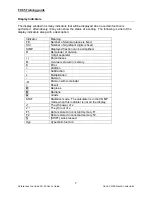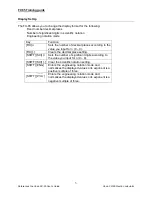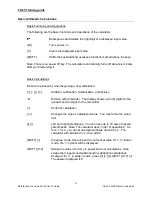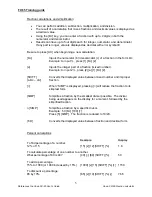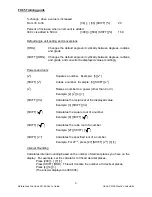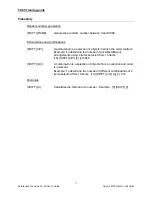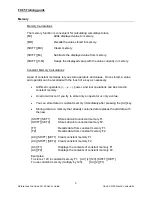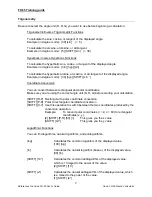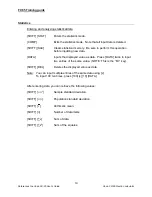
FX 65 Training guide
Trigonometry
Be sure to select the angle unit (D, R, G) you want to use before beginning a calculation.
Trigonometric/Inverse Trigonometric Functions
To calculate the sine, cosine, or tangent of the displayed angle.
Example (in degree mode): [30] [sin] (= .5)
To calculate the arcsine, arccosine, or arctangent.
Example (in degree mode): [.5] [SHIFT] [sin] (= 30)
Hyperbolic/ Inverse Hyperbolic Functions
To calculate the hyperbolic sine, cosine, or tangent of the displayed angle.
Example (in degree mode): [3.6] [hyp] [sin]
To calculate the hyperbolic arcsine, arccosine, or arctangent of the displayed angle.
Example (in degree mode): [30] [hyp] [SHIFT] [sin
-1
]
Coordinate Conversion
You can convert between rectangular and polar coordinates.
Make sure you are using the correct angle unit (D, R, G) before starting your calculation.
[SHIFT] [R-P] Rectangular to polar coordinate conversion
[SHIFT] [P-R] Polar to rectangular coordinate conversion
[SHIFT] [X-Y] Use this operation to switch between the two coordinates produced by the
conversion operation.
Example:
To convert polar coordinates (r = 2,
θ
= 60) to rectangular
coordinates (x, y).
[2] [SHIFT] [P-R] [60] [=]
This gives you the x value.
[SHIFT] [X-Y]
This gives you the y value.
Logarithmic Functions
You can find logarithms, natural logarithms, and antilogarithms.
[log]
Calculates the common logarithm of the displayed value.
[100]
[log]
[ln]
Calculates the natural logarithm (base
e
) of the displayed value.
[90]
[ln]
[SHIFT] [10
x
]
Calculates the common antilogarithm of the displayed value,
which is 10 raised to the power of the value.
[2]
[SHIFT]
[10
x
]
[SHIFT] [e
x
]
Calculates the natural antilogarithm of the displayed value, which
is
e
raised to the power of the value.
[1]
[SHIFT]
[e
x
]
9
References the Casio FX-65 User’s Guide
Casio FX-65 Fraction calculator


